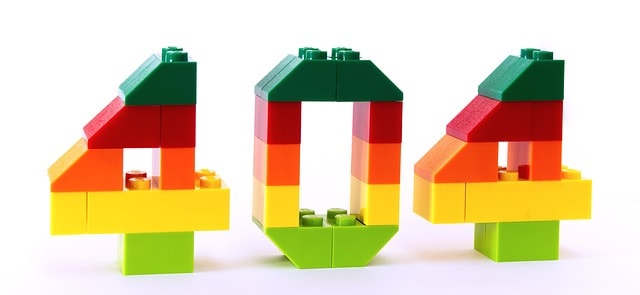
Menu
Close



Free SEO Audit
Free SEO Audit



Broken or dead links are hyperlinks that no longer lead to their intended destination. They often return error messages like 404 Not Found, which means the page has either been moved, deleted, or the link was entered incorrectly. While they may seem minor, broken links can significantly impact your website’s performance.
From an SEO standpoint, broken links affect crawlability and waste valuable crawl budget, making it harder for search engines like Google to index your site efficiently. For users, clicking on a link that doesn’t work can lead to frustration, reduce trust, and increase bounce rates.
Whether you're managing a blog, business site, or eCommerce store, it's important to regularly check for broken links and fix them promptly. In this guide, we’ll walk you through how to find broken links on a website, including free broken link checker tools and methods for testing, fixing, and preventing them.

Broken links, also known as dead links, are hyperlinks that point to a page or resource that no longer exists or can’t be accessed. When clicked, they typically lead to error pages like 404, 403, or server errors, disrupting both user experience and search engine navigation. Regardless of the term, both negatively impact SEO and usability.
While the terms broken links and dead links are often used interchangeably, there’s a slight distinction. “Broken links” is a broader term that includes any malfunctioning hyperlink, while “dead links” usually refer specifically to links that lead to a page that’s completely unavailable or deleted.
Regardless of the term, both negatively affect SEO and usability. Using a web broken link checker or dead links checker can help you identify and resolve these issues before they harm your rankings or visitor trust.
Ignoring broken or dead links can quietly harm your website’s overall performance. When you check for broken links consistently, you help maintain a smooth user experience and ensure your site stays in Google’s good books.
It's also important to track the number of broken links over time to monitor improvements and ensure ongoing website health.
Search engines like Google rely on internal and external links to crawl and index content. If they encounter too many broken links, it can reduce your site’s crawlability and impact your rankings. A regular website check for broken links helps ensure your SEO efforts aren’t being undermined by dead ends.
When visitors click on a link expecting helpful information but land on an error page instead, it erodes trust. Broken links create friction in the user journey and can stop potential customers from converting especially on landing pages, product pages, or blog posts with CTAs.
Dead links make your site look outdated or poorly maintained. A high number of broken links can increase your bounce rate as users quickly leave your site out of frustration. Keeping your content clean and functional boosts your site's credibility and encourages longer engagement.
If you want to keep your site healthy, you need to know how to find broken links on a website, and fix them. There are two primary methods: manual checking and automated tools.
Automated tools can recursively scan your entire site to discover broken links, ensuring you catch issues across all pages that might otherwise be missed.
Manual checking involves clicking through each link on your site to see if it works. You need to visit each page individually to check for broken links. You can also use browser extensions to help detect broken links on individual pages.
Limitations of Manual Checking:
Manual methods are best reserved for small websites or occasional spot checks.

Automated tools are a more efficient way to uncover broken or dead links. Here are some of the most reliable options:
1. Google Search Console A free tool that can alert you to crawl errors, including broken internal and external links. Ideal for identifying major issues over time.
2. Screaming Frog SEO Spider A powerful desktop application that crawls your website like a search engine. It highlights broken links, redirects, and more. Free for up to 500 URLs. Screaming Frog allows you to filter results, export data as CSV or Excel files, and view detailed reports including source URLs, anchor text, and warnings. You can also check the status of links to see if they are still alive and analyse the underlying HTML or PHP code for issues.
3. Ahrefs offers a site audit tool that scans for broken links as part of a wider technical SEO analysis. Great for agencies or professionals managing multiple sites. Its features for webmasters include tracking internal broken links, exporting reports, and identifying broken link building opportunities by analysing competitors' domains and source pages.
4. Broken Link Checker Tools There are several web broken link checker tools available online, many of which are free or freemium. Popular options include:
Many of these services are accessible via Chrome, support PHP and HTML sites, and allow you to log in to access advanced features. They help webmasters validate code, check anchors, and manage multiple domains efficiently.
Most broken link checker services offer features like exporting data, sending reports as files, filtering by code or status, and providing detailed information about each reported issue, including the source, anchors, and whether the link is still alive. For example, you can export data as a CSV report, then send the file to a colleague for review or further action. Some tools also allow for weekly scans and ongoing access to reports for continuous monitoring and improved SEO health.

Once you’ve found broken or dead links, the next step is to test and fix them. This ensures your website continues to deliver a smooth user experience and maintains its SEO performance.
Start with a full link audit using a broken links testing tool. Tools like Screaming Frog or Ahrefs will scan every page of your site and provide a list of links that are returning errors. Free online checkers like Dead Link Checker can also help you identify problem areas quickly.
Make sure to check:
Once identified, here’s how to resolve them:
Use your chosen web broken link checker regularly to ensure no new broken links appear on your site.
Fixing broken links is great, but preventing them in the first place is even better. Implementing a few key practices can help you reduce future link issues and save time in the long run. Scheduling weekly scans is recommended to catch new broken links early.
When updating or removing pages, always check which other pages link to them. Use 301 redirects when removing a page permanently to guide users and search engines to an alternative.
Schedule routine checks using tools like Screaming Frog or automated alerts in Google Search Console. This ensures you catch and resolve issues early before they affect SEO or user experience.
Include broken link checks as part of your content audit process. This is especially important for older blog posts, product pages, or resources that may contain outdated outbound links.
For CMS platforms like WordPress, plugins like Broken Link Checker can automatically scan and notify you when links stop working. This kind of automation is especially useful for larger websites or content-heavy blogs.
By staying proactive with link maintenance, you’ll improve your site’s crawlability, protect your rankings, and provide a better experience for your users.
Broken and dead links might seem like a minor issue, but they can quietly damage your SEO performance and user experience over time. That’s why it’s essential to check for broken links on a regular basis and fix them before they impact your rankings, credibility, or conversions.
The good news? You don’t need expensive tools or hours of manual work to stay on top of it. Set up a simple monthly routine using tools like Google Search Console, Screaming Frog, or a free web broken link checker. Most of these will alert you to broken URLs automatically so you can fix them before they become a problem.
Start your audit today with one of these free tools and keep your website running smoothly for both users and search engines.
Some of the best tools include Screaming Frog SEO Spider, Ahrefs Site Audit, Google Search Console, and online options like Dead Link Checker or BrokenLinkCheck.com. For most users, Screaming Frog offers a balance of depth and usability.
Yes. Dead links can prevent search engines from properly crawling your site, waste crawl budget, and harm your rankings. They also create a poor user experience, leading to higher bounce rates and reduced trust.
To fix a broken link, you can either:
Absolutely. Tools like Google Search Console, BrokenLinkCheck.com, and W3C Link Checker offer free ways to find broken links on your website. While they may have limitations compared to paid options, they’re effective for small to mid-sized sites.